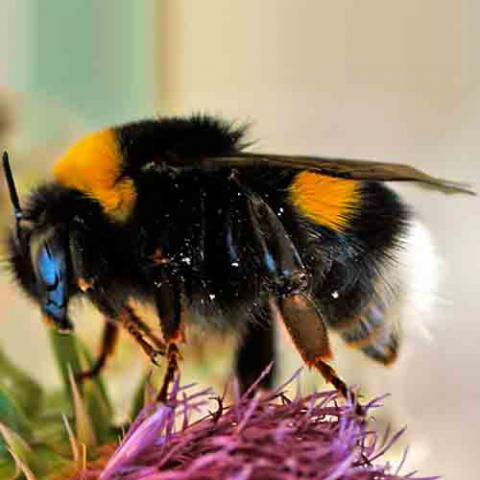NAMES
TAXONOMY
Canada
Issued:
Stamp:
Bombus polaris
Canada
Issued:
Stamp:
Bombus polaris
Canada
Issued:
Stamp:
Bombus polaris
Genus species (Animalia): Bombus polaris
Bombus polaris is a common Arctic bumblebee species. B. polaris is one of two bumblebees that live above the Arctic Circle. The other is its social parasite Bombus hyperboreus. B. polaris is a social bee that can survive at near freezing temperatures. It has developed multiple adaptations to live in such cold temperatures. B. polaris has a thicker coat of hair than most bees, utilizes thermoregulation, and makes insulated nests.
Description and identification
Appearance (General)
Bombus polaris has a thicker coat of hair than temperate bees in order to slow heat loss. Although the coloration of this bee is variable, the thorax is usually black with orange-yellow edges, while most of the abdomen is orange-yellow with a black tip. B. polaris also has a higher abdominal temperature than its temperate cousins.
Appearance (Workers)
The variation in the color of the pubescence is noticeable variable. The pubescence of the apical dorsal abdominal segments varies from deep rust color to a dull yellow color. There is also a considerable variation in the size of the workers. Some can be scarcely 10 mm in length, while others can be much larger.
Thermoregulation
Additionally, B. polaris has a bio-mechanical method of bringing its body to a much higher abdominal temperature than its temperate relatives. The ability of B. polaris to fly in deep cold is due to a process called thermoregulation, which allows it to raise its internal body temperature to temperatures as high as 38 °C. For this reason B. polaris is likely to outcompete any temperate bumblebee species that might seek to expand to the northern range.
Distribution and habitat
This bumblebee has a wide circumpolar distribution, found in Canada, Arctic Alaska, Arctic islands (Devon Island, Ellesmere Island, Baffin Island and Greenland), northern Scandinavia and across Arctic Russia (Nenets, Yamalo-Nenets, Sakha and Chukotka). As of 2015, B. polaris is common and is not listed as endangered. Bombus polaris is an alpine species. They exclusively live at the summits of mountains. This clear separation between alpine species and subalpine species may be due to superior competition from the subalpine species, leading to a suboptimal habitat occupation of the alpine species. An alternative explanation is that the alpine bee species possess both the ability and body type to survive the colder temperatures, which naturally separates the two types of bees into distinct ecological territories. Alpine species usually have a larger body length in comparison to subalpine species.



